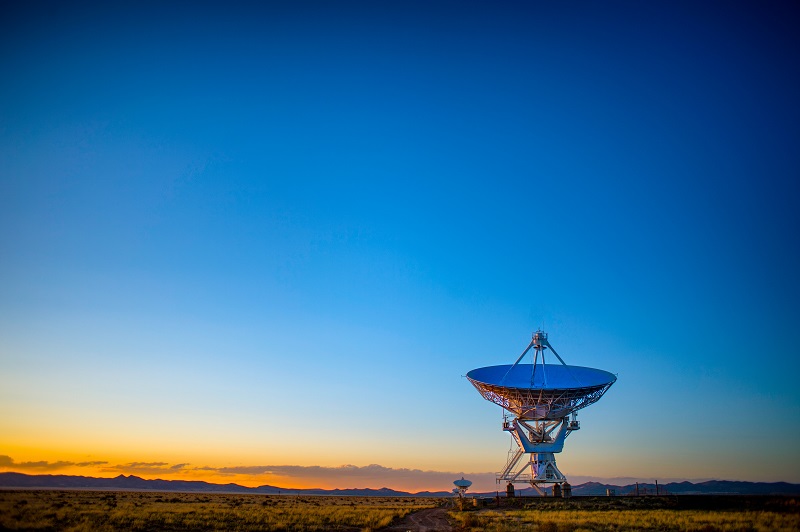From IC Insider CrowdAI
This piece is co-authored by CrowdAI CEO and CO-Founder, Devaki Raj, and CrowdAI Head of Policy & Government Affairs, Jafer Ahmad. CrowdAI is a leading vision AI company based in San Francisco and Washington, D.C.
“Slow is smooth, and smooth is fast” – It’s a popular motto among U.S. Special Operations Forces (SOF), and it’s widely applicable. We in the defense space are often faced with crises for which AI-driven analyses are essential. Consider the case of indications and warnings alerting for troop and/or order of battle mobilization, or disaster area mapping for shepherding relief resources post-event. Unfortunately, it’s often right before an imminent crisis that we see a flood of panicked requests for AI-driven analyses (i.e., not smooth). Without the proper AI foundation carefully built ahead of time, AI-driven analyses will not be as timely as they need to be in order to quickly mobilize to the call of the hour (i.e., not fast).
Building the proper AI foundation – one that is smooth and can thus be used to act swiftly when needed – requires thoughtful planning (i.e., first moving “slowly”). This is why CrowdAI, which works to put AI in the hands of those analysts who work on tough defense challenges, celebrates DEPSECDEF Kathleen Hicks’ recent establishment of the role of Chief Digital and Artificial Intelligence Officer (CDAO) at the Department of Defense (DoD).
The CDAO, and its supporting office (OCDAO), are charged with ensuring DoD becomes a digital and artificial intelligence (Al)-enabled enterprise capable of operating at the speed and scale necessary to preserve military advantage. In early February, Ms. Hicks named DoD Chief Information Officer John Sherman as the acting CDAO, who will serve in the role until the position is filled permanently.
The establishment of the CDAO builds upon the progress made by the Joint Artificial Intelligence Center (JAIC), the Defense Digital Service (DDS), and the Chief Data Officer (CDO), elevating the importance of these organizations’ areas of focus. It also ensures unity of mission and strategic alignment, as the CDAO is now the senior official responsible for strengthening, integrating, and scaling data, artificial intelligence, and digital solutions in the Department.
In this post, we offer some recommendations for what Mr. Sherman (and/or his successor) should do as CDAO to first move slowly in order to properly build an AI foundation for DoD that is smooth and thus fast when it comes to AI-driven analyses.
Build the right team.
OCDAO is expected to have a staff size of 200-300 people. Rather than filling billets as soon as possible, potentially creating a bloated office, the CDAO should prioritize carefully building the right Given that OCDAO’s immediate directive from Ms. Hicks is to conduct a review of the DoD authorities and governance structures associated with data analytics and AI, this means hiring policy analysts and contracting officers familiar with these areas. Building the right team also means hiring individuals with specific domain expertise or experience working with the owners of various DoD mission areas. This includes subject matter experts, engineers, and program managers.
Embed the team throughout DoD.
Having the right people on the team is only part of the battle. It is also essential to have team members embed with DoD end-user groups to get buy-in from those groups and ensure that the AI and digital solutions deployed are actually being adopted and used. Ultimately, embedding team members can best inform how OCDAO goes about operationalizing AI and digital solutions in ways that will end up actually solving specific DoD problems.
Create or adopt a DoD-wide required data ontology.
Effective AI requires good training data – data that is representative, plentiful, diverse, and well-labeled. For effective AI to scale, it requires a common data ontology so that data labels are consistent across similar training data sets, and can thus be used across the enterprise. This would involve tackling current discrepancies in DoD data ontologies such as the different definitions for what constitutes Air Order of Battle for the Navy and Army.
Rather than reinvent the wheel, DoD can look to international treaties for widely agreed-upon and in-use data ontologies from which to borrow. For example, the U.S. is party to international agreements that specify overhead imagery as a means to verify State Party compliance with obligations. One of these is the Treaty on Conventional Armed Forces in Europe (CFE Treaty). The CFE Treaty highlights the utility of sharing a common data ontology across departmental jurisdictions, as it makes use of a data ontology that is shared by some 20+ countries. Given its widespread use, an existing ontology like this could more easily be adopted beyond DoD, helping scale AI across the U.S. government.
A DoD-wide data ontology should also include consistent standards for metadata tagging, to include information on sensor, location, time, security permissions, etc, so that data is organized across the enterprise.
Create policies and technological infrastructure to enable data sharing and AI model deployment across DoD.
A common data ontology enables consistent data labels across similar training data sets, and thus use of those data sets across the enterprise. But use of data hinges on access to it. In order for the DoD to get the best results with AI, there needs to be streamlined access or sharing mechanisms that also maintain data security requirements.
Having a shared data ontology, a robust data library, and a robust repository of AI models trained off of that data is essential, but there still needs to be a way to deploy AI models seamlessly across DoD from one DoD entity to another DoD entity that could retrain or tweak any given model for their own use.
This requires policy directives and guidance on data and model sharing, as well as the technological infrastructure to actually make it real. The latter should enable end-to-end data and AI model search and access, as well as ways to integrate data and AI models into existing user interfaces. This includes data access controls that build off of current information classification systems, as well as providing purpose-base controls that allow for temporary access during joint mission exercises.
We celebrate DoD’s aim to become a digital and Al-enabled enterprise capable of preserving military advantage, and we’re bullish on the role OCDAO can play in making that happen. We’re confident that if Mr. Sherman (and/or his successor) moves with careful intent, incorporating the above recommendations into OCDAO strategy, he (or she) will create an AI foundation for DoD that is smooth and fast when it comes to enabling the AI-driven analyses that are essential for tackling our defense challenges.
About CrowdAI
CrowdAI offers the leading software platform to build customized computer vision (CV), enabling anyone to create high quality CV models to analyze imagery and video—no data science background or coding required. Our full-stack solution provides all the tools necessary to go from raw pixels to structured insights relevant to your specific needs. CV models created via CrowdAI’s software platform, have been used for ISR, humanitarian assistance and disaster response, countering illicit trafficking, infrastructure maintenance, public health monitoring, medical diagnostics, and beyond. Visit CrowdAI at www.crowdai.com.
About IC Insiders
IC Insiders is a special sponsored feature that provides deep-dive analysis, interviews with IC leaders, perspective from industry experts, and more. Learn how your company can become an IC Insider.









